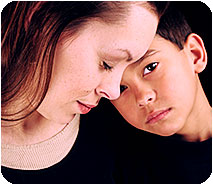As a parent, have you ever wondered:
“What can I do to influence the way my children turn out?”
an article by Irine Schweitzer, Psy.D., LCSW
The current findings coming out of research on Attachment and Interpersonal Neurobiology have now provided us with some of the answers to parent’s questions about influencing outcomes.
It turns out that the very qualities we want our children to have such as self confidence, empathy, and morality are the very same processes a human brain emphasizes and encodes.
But not just any brain — only a brain that is able to integrate its left and right hemispheres. An integrated brain enables children to thrive and achieve a highly flexible and adaptive capacity for balancing their emotions, thinking and empathic responses.
An integrated brain?
Your first question might be then: “Well, what contributes and promotes the brain’s ability to synthesize and integrate two very different hemispheres, the right which is the center for creative thought, and the left, which is the center of linear, logical, literal processes?”

It turns out that secure attachment between children and their primary caregivers are the key to promoting the development of an integrative capacities of the brain.
What is a secure attachment between a parent and child?
The term secure attachment, and its correlate, insecure attachment was coined by Mary Main, who did a great deal of research with babies and their primary caretakers. To understand the nature of a child’s attachment to a parent, she devised a situation in which a baby/toddler was left alone with a stranger (researcher) for a few minutes. Then, the parent would come in and the child’s reaction was recorded. Secure children were those that got upset when mommy left, but quickly reconstituted themselves when she came back. The insecure children either avoided going to mommy when she came back, or were resistant to mommy’s attempts at comfort.
A mother’s story affects the attachment of her child.
What is actually even more amazing about these findings is that the results of a structured, follow up interview of the moms from all the different categories, were used to predict what kind of attachment their children will have, five years hence. In other words, based on what moms reported in their interview, the researcher was able to predict if the mother will have a secure attachment to her child or not.
What was, then, the main difference in the interview between the moms whose children displayed secure attachment and the moms whose children did not? The researchers’ answer was the coherence of the story the parents told about their lives. Not stories of happy childhoods smooth sailing, lack of conflicts or problems. Many stories were of not very happy childhoods, with some trauma, difficulties and challenges. But, these parents could conceptualize what had happened to them, process the ups and the downs, accept their past, and then talk about it in a fluid, open, and coherent way.
Good parents can integrate their life story.
Thus, the parent’s ability to integrate their past with the present was the predictive factor for the kind of an attachment their children would form with them. It is interesting to note, that a child could have a secure attachment with one parent, and an insecure attachment with other.
Even more fascinating is the fact that parents who were able to look at their lives, process their yet unprocessed experiences, deal with the pain and the hurt not yet dealt with, and then integrate those experiences into their sense of self, were able to change the insecure nature of their children’s attachment, to a secure one.
With work and dedication, change is truly possible.
If you would like help with integrating, processing and narrating your life story, please call Irine Schweitzer, LCSW at 818 754-4501 or contact Irine via email.
